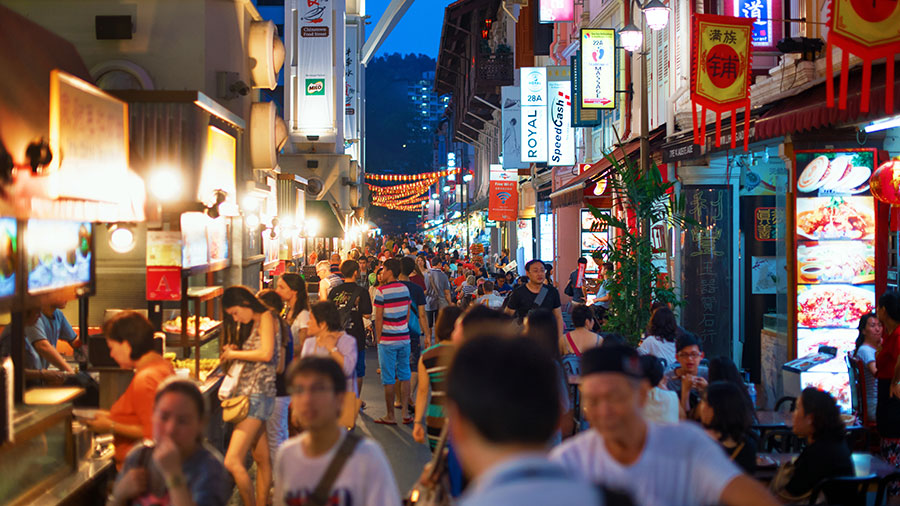Have you ever looked at the available memory on your hard drive and think, ‘Where did all that storage go?’ I did that recently and discovered I actually had quite a lot saved on there – more than 120GB worth of travel photos, to be precise.
Rather than leaving them to gather digital dust in a folder 17 levels deep (it’s a handy way of finding images later) I thought it was time to turn them into something that I and hopefully others might be able to enjoy.
The first to get this treatment is the remarkable Kinkaku-ji Golden Pavilion in Kyoto, which we visited over Christmas/New Year 2018.

Kyoto’s most famous sight, the three-storey pavilion was first built in 1397 as the retirement residence of the shogun Ashikaga Yoshimitsu. The official name is actually Rokuon-ji, meaning ‘deer garden temple’, but the more literal description is how most people refer to it now.
Set beside a stunning reflection pond, the pavilion really is photographer’s dream from every angle.

The upper floors are gilded in gleaming gold leaf, while lower levels feature natural timber pillars and white plaster. Visitors are not allowed inside the pavilion. However, you can usually view the statues of Buddha and the shogun Yoshimitsu on the ground level from the viewing area across the pond (if the doors are open, that is).


It was heaving with both local and international visitors the day we arrived. Thankfully, the way the main vantage points are set up means you can still capture that near-deserted photo that everyone wants.
Turn around though and it was a very different story… which actually resulted in some fun ‘expectation vs. reality’ photos.
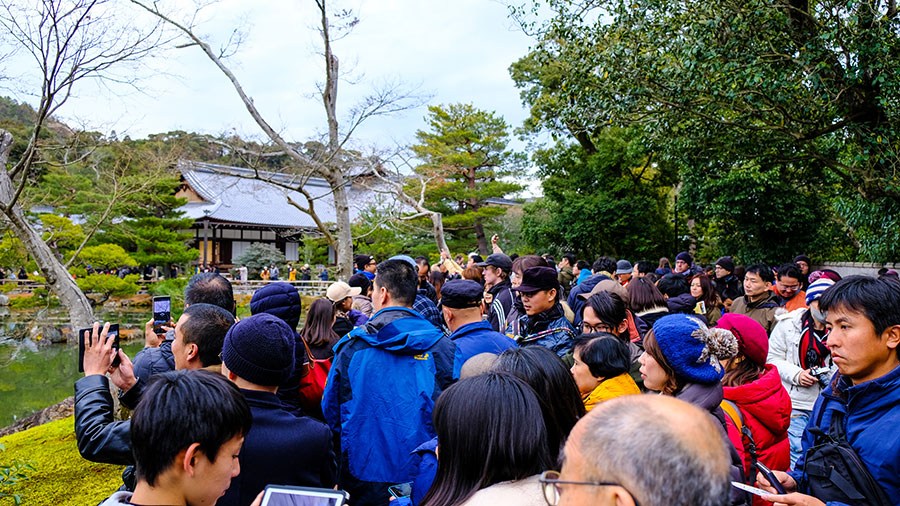
Those who wisely chose not to jostle with others to nab that famous view were still able to capture some stunning images from around the edges of the pond. I think the pine trees lining its shore – some of which are 600 years old – add more character to photos, rather than just straight carbon copies.
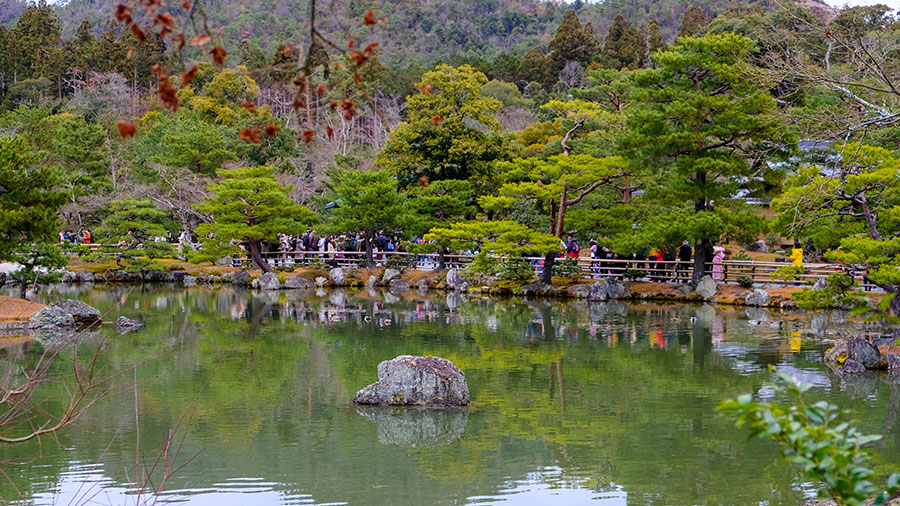

You do feel a bit like salmon migrating upstream as you explore the grounds, as there’s a strict circuit which everyone must follow. It takes you to all of the main sights, as well as some smaller (but still impressive) ones like Anmintaku Pond, which is said to never dry up, and various lookouts.
Those who went against the stream had their work cut out for them.
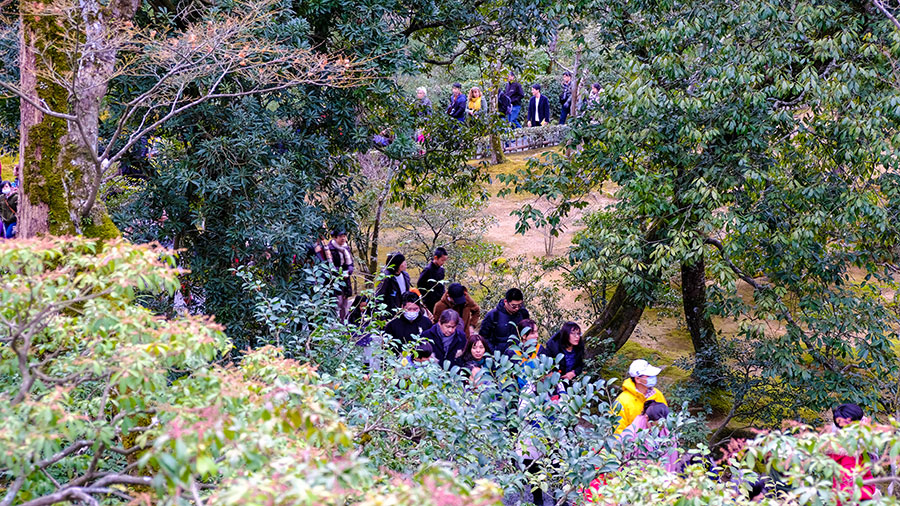
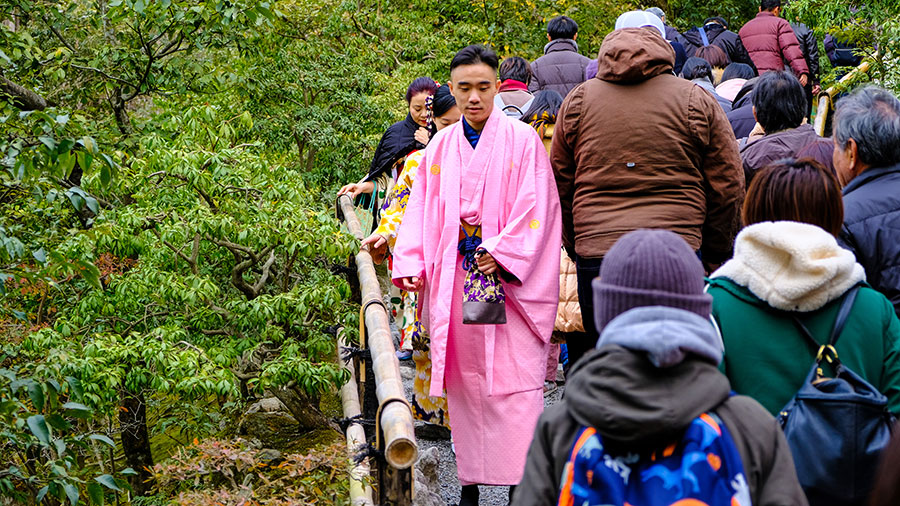
Besides the main pavilion there’s plenty to see throughout the complex. The gardens are exquisite and much the same as they were in the time of the shogun. You feel like you’ve stepped into an ancient, magical world with lichen growing on the trees and vast expanses of moss on the ground.



People watching was an unexpected highlight. While most Japanese don’t wear kimonos on a daily basis, they do love any opportunity to dress up.
Elaborate costumes every colour of the rainbow can be hired throughout the city. It adds to the feeling you’ve stepped back in time, even if the occasional iPhone appearing does shatter the illusion.


If you have the opportunity to visit Kinkakuji, do it! It’s absolutely stunning. And if we were to do it all again, an early morning visit would probably be best.
Looking to experience one of Japan’s less-explored destinations? Aichi could be exactly what you’re looking for.





